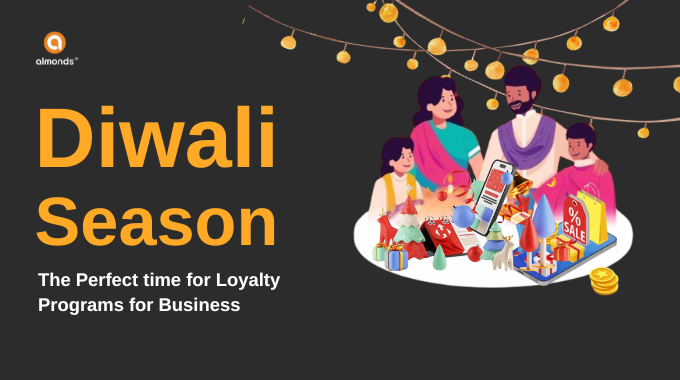The Entire world clapped when Hon. PM Narendra Modi said, “Paris or No Paris, India is Committed to Protecting the Climate” at the St. Petersburg International Economic Forum 2017. He underlined, “We must leave for our future generations a climate wherein they can breathe clean air and have a healthy life.”
Since then, every industry and business of any size has been seeking ways to be more environmentally friendly and sustainable with their actions.
The loyalty programs and b2b channel partner engagements industry, already twenty thousand crore rupees large and expected to grow to eighty thousand crores by 2030, is also in reincarnation mode and carving out new ways to help brands transform their b2b channel engagements, loyalty, and events a lot eco-friendlier and more sustainable.
So, let’s start with introductions and benefits of loyalty programs, then dive into a new initiative, the “Green Loyalty Program,” and how it will offer sustainability in the loyalty industry.
Understanding Loyalty Programs
Loyalty programs provide rewards and incentivize ongoing loyalty among customers, channel partners, or brands nano influencers, such as painters for a paint company. B2B or B2C loyalty programs focus on building strong, long-term relationships with customers, and channel partners, driving repeat business, and fostering trust and partnership.
Incentives and Rewards in Loyalty Programs
B2B loyalty programs emphasize offering client business enhancements and a truly branded experience. They focus on delivering value-added rewards that contribute to business growth and success.
Such rewards can include:
- Business Support:
Offering specialized support services to clients, helping them improve their operations, optimize processes, and enhance overall business efficiency.
- Special Experiences:
Providing unique experiences tailored to the B2B client, such as exclusive access to events, conferences, or networking opportunities.
- Catalog-based rewards:
Every time a channel partner completes a target or achieves a goal, the brand may give them some redeemable points, which can be redeemed against a pre-set catalog of deliverable products, gift vouchers, cashback, and credit notes.
Conversely, B2C loyalty programs often utilize discounts and promotional campaigns to drive loyalty and repeat business.
A Green Loyalty Program
Green loyalty programs (a.k.a. eco-friendly or sustainable loyalty programs) are loyalty initiatives businesses implement to educate customers about sustainability, encourage them to engage in sustainable behaviors, and support environmentally friendly practices. Customers are also incentivized and rewarded extra for making environmentally conscious choices while engaging with the loyalty program.
The key features of green loyalty programs may include the following:
- Rewards for eco-friendly actions:
Customers are rewarded for taking sustainable actions such as recycling, reducing energy consumption, using public transportation, or purchasing environmentally friendly products.
- Eco-Friendly rewards:
A reward catalog curated thoughtfully with eco-friendly and sustainable products that customers can redeem digitally.
- Green purchasing incentives:
Customers earn loyalty points or discounts for choosing eco-friendly products or services over less sustainable alternatives. It encourages the adoption of environmentally conscious consumption habits.
- Carbon offsetting:
Some green loyalty programs may offer the option to offset carbon emissions generated by customers’ activities. Customers earn rewards or recognition for participating in carbon offset programs.
- Education and engagement:
These programs often provide educational resources, tips, and information to raise awareness about environmental issues and help customers make informed decisions.
- Partnerships with eco-friendly brands:
Green loyalty programs may collaborate with environmentally friendly businesses, offering exclusive rewards or discounts when customers purchase from these partners.
- Donation options:
Some programs allow customers to convert their loyalty points into donations to environmental causes or non-profit organizations focused on sustainability.
Green loyalty programs‘ specific features and rewards vary across businesses and industries. These programs serve as a marketing tool to promote sustainability and encourage positive environmental practices among customers.
Transitioning to a Green Loyalty Program
To start or convert existing loyalty programs into green loyalty initiatives, brands can take the following steps:
- Evaluate Sustainability Goals:
Brands should assess their sustainability objectives and determine how a green loyalty program aligns with their core values. Defining clear objectives will guide the development and implementation of sustainable initiatives. - Incorporate Sustainable Actions:
Identify eco-friendly actions that can be incentivized within the loyalty program. It can include promoting responsible sourcing, encouraging energy-efficient practices, supporting recycling programs, or offsetting carbon emissions.
- Introduce Eco-Friendly Rewards:
Incorporate green rewards into the loyalty program by offering sustainable products, eco-travel experiences, carbon offset credits, or the option to donate loyalty points to environmental causes.
- Communicate the Green Message:
Educate program participants about the environmental impact of their choices and the positive contribution they can make through sustainable behaviors. Regularly communicate the brand’s green initiatives to inspire and engage customers.
- Track and Measure Impact:
Implement tracking mechanisms to monitor the environmental impact of the loyalty program. Measure key metrics such as waste reduction, energy savings, carbon emissions offset, and customer engagement with sustainable actions.
- A digital-first approach to events:
According to research by Industry Expo organizers, a single three-day conference with 800 attendees leaves a footprint of 455 tonnes of CO2 equivalent. A conference done digitally leaves much lesser footprints. It also resolves the problem of demography.
These are some basic steps by which brands can successfully transform their loyalty programs into green loyalty initiatives, fostering sustainability while strengthening customer relationships.
The Future of Green Loyalty
The scope and future of green loyalty programs are promising. As sustainability becomes increasingly important in business practices, companies prioritizing environmental responsibility will differentiate themselves in the market. Green loyalty programs will be pivotal in nurturing long-term partnerships based on shared values, enhancing brand reputation and customer loyalty.
| “Businesses that lead the way in sustainability will have a distinct competitive advantage in the years to come.” – Richard Branson |
In The End
Almond is taking loyalty programs on an exciting journey of a green and sustainable future through the “Green Loyalty Program.” So, brands should consider what they can do to create a better and eco-friendly industry because embracing sustainability and transitioning loyalty programs to green initiatives will unlock new opportunities for brand differentiation, customer engagement, and environmental impact.
Remember, the path to a greener future lies in our collective efforts. Let’s create a sustainable world while nurturing valuable B2B relationships.
| “Never doubt that a small group of thoughtful, committed people can change the world. Indeed, it is the only thing that ever has.” – Margaret Mead |







